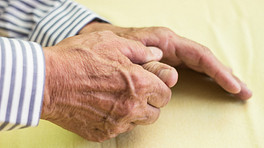After addressing pain and other physical symptoms that are interfering with sleep, the remaining common treatment options for insomnia are cognitive behavioral therapy and sleep medications.
Research indicates one of the most lasting and effective treatments for sleep disruption is cognitive behavioral therapy (CBT). CBT helps patients change both their thinking and their behavior related to sleep issues (and chronic pain). The cognitive part of the therapy is that which focuses on patient thinking. The behavioral part of the therapy is that which focuses on patient behaviors, and is typically referred to as sleep hygiene.
In This Article:
- Coping with Chronic Pain and Insomnia
- Therapies for Treating Insomnia
- Medications Used to Help Treat Insomnia
Cognitive Therapy
Sleep is often disrupted by stressful thinking and rumination. When a person attempts to fall asleep, he or she typically blocks out all other sensory input. The bedroom is dark and quiet and the individual is left with only thoughts. This can be either relaxing or a stressful.
If a person’s mind is filled with thoughts about the stressful day, pain, financial troubles, or worries about not falling asleep, he or she will likely have insomnia.
Over time, people with insomnia may develop self-defeating thoughts, such as, “No matter what I do, I can never fall asleep.” Cognitive therapy can challenge a patient’s negative thought patterns and false beliefs about stressful issues including sleep and insomnia (e.g. “My insomnia is incurable,” or “If I don’t fall asleep by 11, tomorrow will be terrible.”). Patients can also be taught to redirect thoughts away from anything anxiety-inducing, a tactic called cognitive restructuring or distraction.
The number of sessions needed for treatment will vary by patient. Some doctors may suggest reading material to supplement or replace therapy. Cognitive treatment for insomnia is often accompanied by deep relaxation exercises, such as breathing techniques and self-hypnosis.
Behavioral Therapy
The practices and habits that are conducive to good sleep are collectively called “sleep hygiene.” Like anxiety, chronic pain, or other health problems, a person’s behaviors and sleep environment can also contribute to sleeplessness.
See How to Understand Chronic Pain vs. Acute Pain
Positive daytime habits include:
- Waking up at the same time every day and avoiding naps
- Getting adequate light exposure during the day and dimming lights in the evening
- Scheduling exercise before late afternoon
- Avoiding caffeine after lunch (or entirely)
- Fasting from food for the last few hours before bed
- Staying away from electronic screens in the hours preceding bedtime
- Reserving the bed for sleeping and sex
Positive bedtime habits and environment changes include:
- Using a high-quality mattress with comfortable sheets and blankets
- Eliminating light and noise from the bedroom, including glare and sounds from electronics; a sound machine that generates white noise may help mask outside noises (people will often use a fan for this purpose)
- Lowering the temperature in the bedroom to 68 degrees or lower
- Using deep breathing or progressive muscle relaxation techniques (tensing and then relaxing muscle groups in sequence)
- Using a biofeedback device to help individuals recognize signs of tension and actively work to relax muscles, slow breathing, and calm down
- Going to bed at the same time every day
- Getting up and doing something calming if sleeplessness sets in, returning to bed only once feeling tired
See Coping with Chronic Fatigue in Rheumatoid Arthritis
Any of these tactics can be used alone, but are more effective when used together and in conjunction with cognitive therapy. In some cases, medication is an important addition to this regimen.





